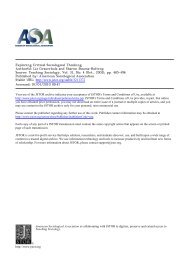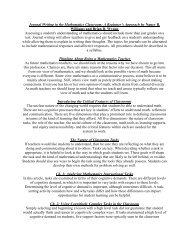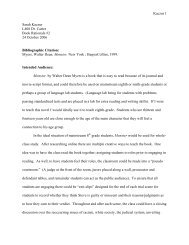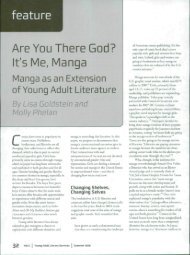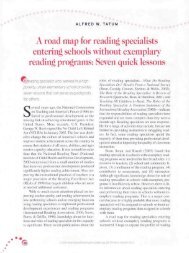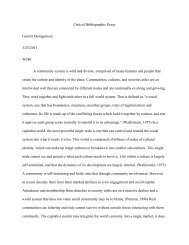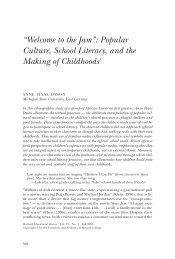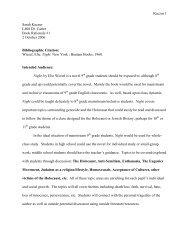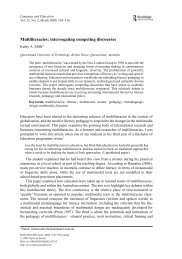Proposal - Oncourse - Indiana University
Proposal - Oncourse - Indiana University
Proposal - Oncourse - Indiana University
Create successful ePaper yourself
Turn your PDF publications into a flip-book with our unique Google optimized e-Paper software.
Windsor: The two projects conducted by the students on our MURI team in my laboratory<br />
produced data that advanced our understanding of the effects of nicotine/tobacco on cells in the<br />
oral cavity. Mia Recupito worked on determining the effects of nicotine, cigarette smoke<br />
condensate (CSC), Porphyromonas gingivalis (P. gingivalis), nicotine/P. gingivalis, or CSC/P.<br />
gingivalis on the expression of chemoattractant protein-1 (MCP-1). She evaluated the effects<br />
utilizing a MCP-1 ELISA kit. She showed that levels of MCP-1 from human gingival fibroblasts<br />
increased with nicotine, P. gingivalis, and P. gingivalis with nicotine, whereas they decreased<br />
with CSC and P. gingivalis with CSC. However, the reason why MCP-1 concentrations in cell<br />
supernatants from cells treated with CSC decreased is unclear at the present time. Multiple<br />
attempts at confirming these results utilizing MCP-1 Western Blotting have not been successful<br />
because of antibody sensitivity issues. Mia has remained in the laboratory to complete some<br />
experiments, which will include utilizing an AlphaLISA kit to confirm the data from the regular<br />
MCP-1 ELISA kit. Elizabeth Smith worked on further studying the effects that nicotine and<br />
CSC has on osteoblasts in regard to cytokine/growth factor, matrix metalloproteinases (MMP),<br />
and type I collagen expression. She examined the changes in cytokine/growth factor and MMP<br />
protein expression utilizing RayBiotech Protein arrays, while she utilized Polymerase Chain<br />
Reaction (PCR) to detect changes in type I collagen mRNA expression. She found that nicotine<br />
was toxic to the osteoblasts at 1000 µg/ml and CSC was toxic at 200 µg/ml particulate matter.<br />
Nicotine (250 µg/ml) caused an increase in expression of IL-7 and MMP-1 by osteoblasts and a<br />
decrease in expression of IFN-γ and MCP-1. CSC (100 µg/ml) caused an increase in expression<br />
of GM-CSF, IFN-γ, and RANTES by osteoblasts and a decrease in expression of IL-3, IL-13,<br />
MMP-9, MMP-10, and TIMP-4. Nicotine and CSC caused a decrease in expression of Type I<br />
collagen by osteoblasts. Elizabeth is now working on writing all her results up in a manuscript<br />
for submission.<br />
Song: The two projects conducted by two students, Boniface Nganga and Milan Pater, have<br />
been progressed successfully. The data generated from the projects will lead to future research<br />
investigations and can be used for manuscript construction. Human pulp fibroblasts, also known<br />
as human pulp cells, have the potential to be involved in dentin formation since they are able to<br />
produce mRNA of dentin specific proteins such as dentin sialoprotein (DSP) and dentin matrix<br />
acidic phosphoprotein 1(DMP1). Both nicotine and cigarette smoke condensate at various<br />
concentrations were able to affect the mRNA productions of DSP and DMP1. Further<br />
investigations will be to detect the changes of DSP and DMP1 at the protein level under the<br />
influence of nicotine and cigarette smoke condensate. Both students have done oral and poster<br />
presentations regarding their work in the Student Research Presentation Program (SRPP) at the<br />
dental school and in the CRL summer research presentation program, respectively.<br />
MURI Mentor’s Project <strong>Proposal</strong> Form, Updated: 1-25-2011 2



